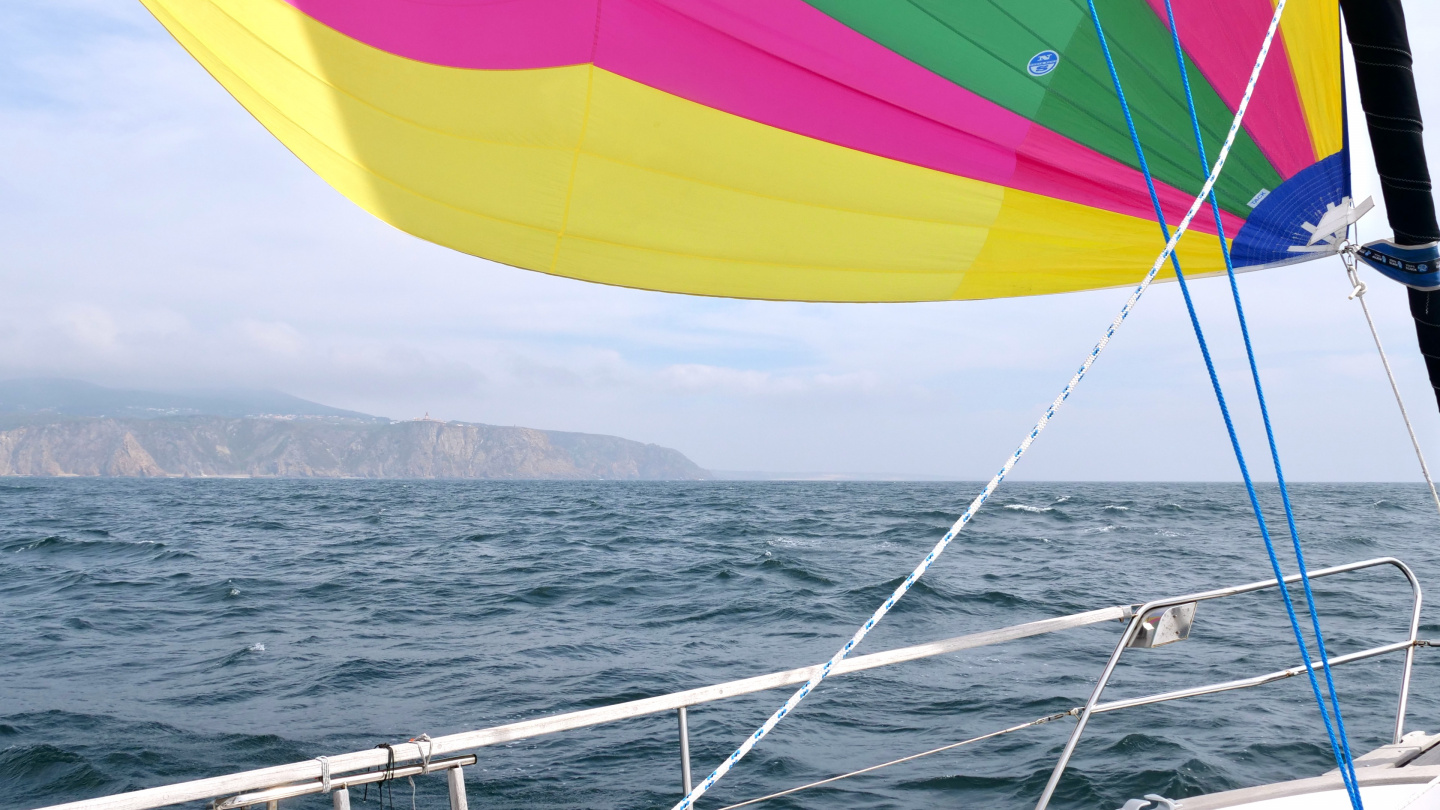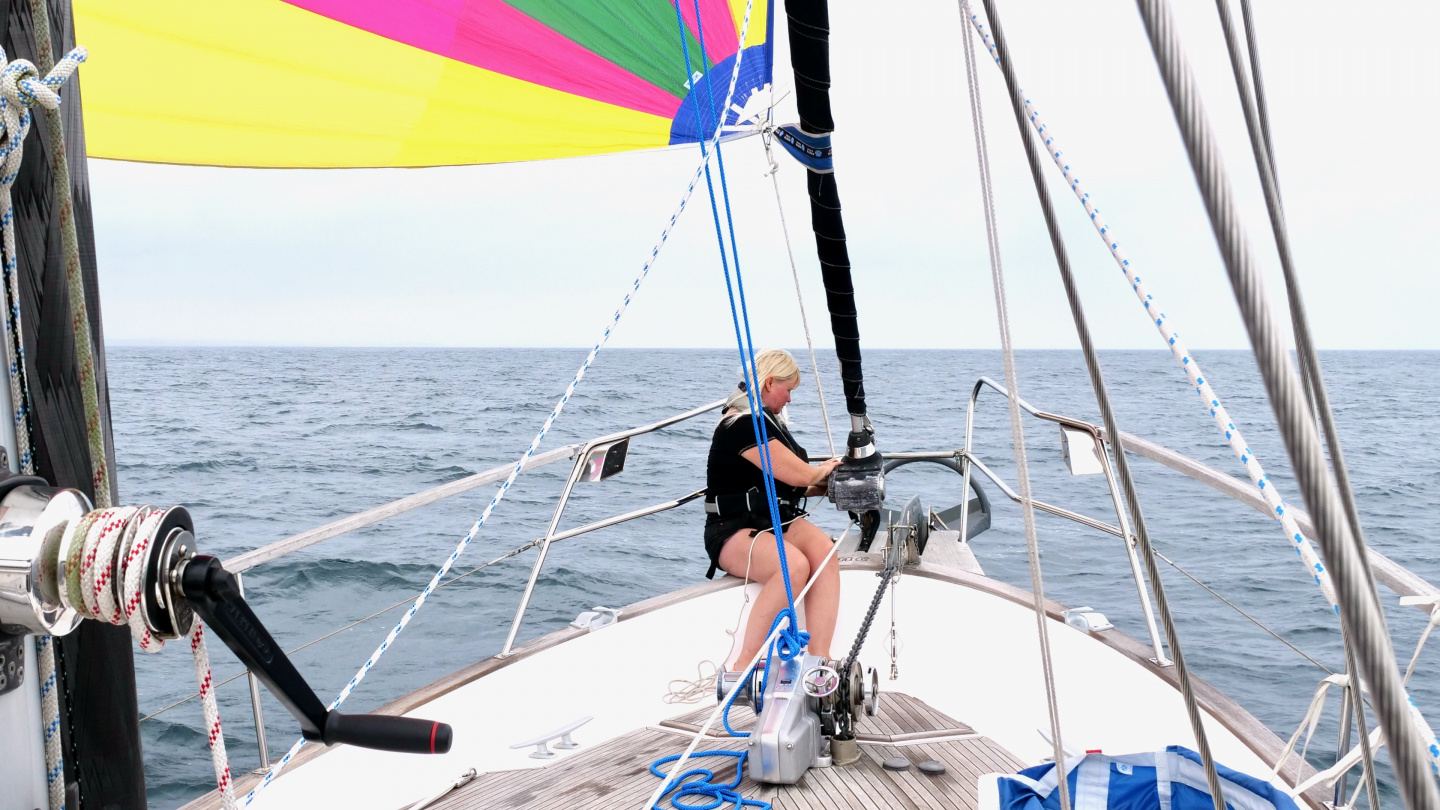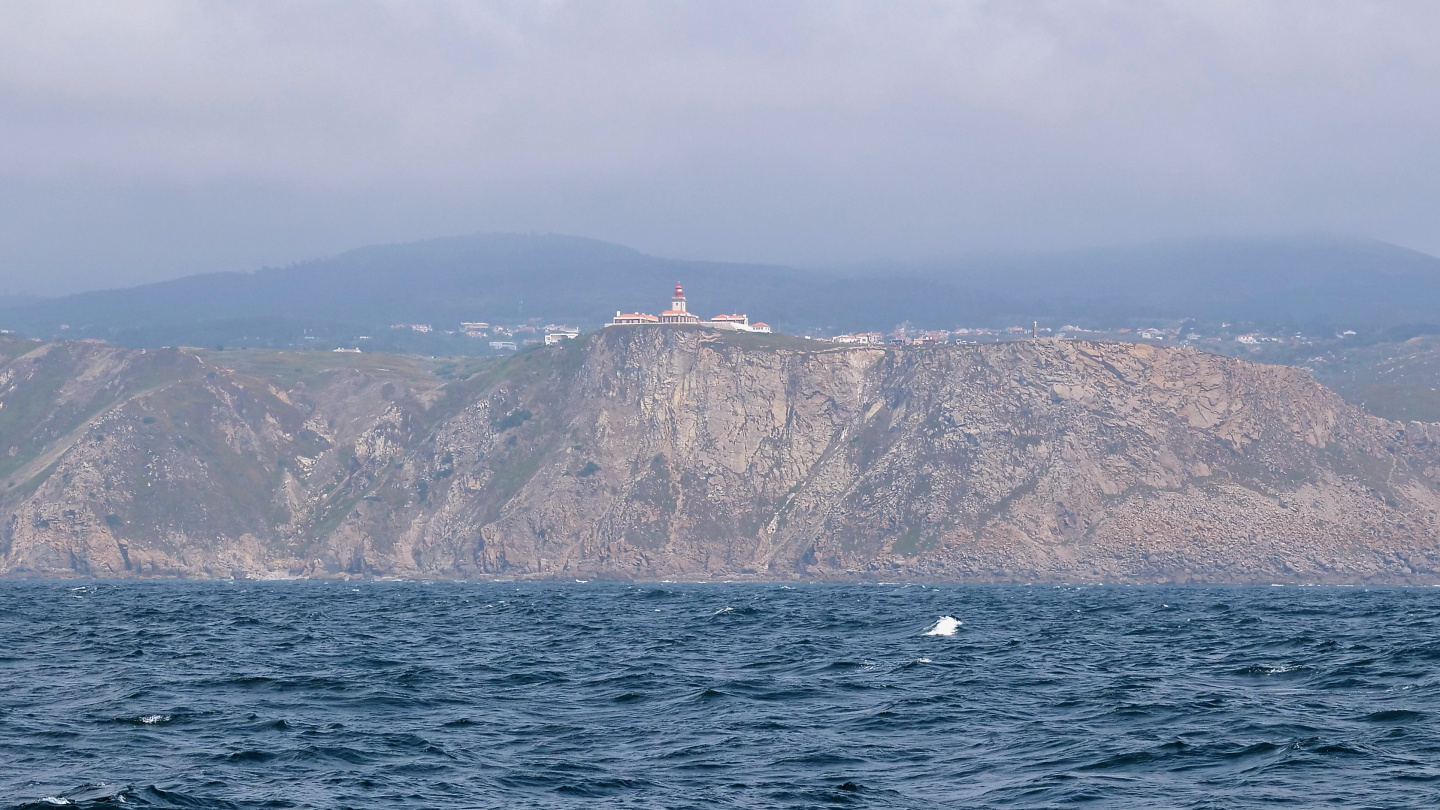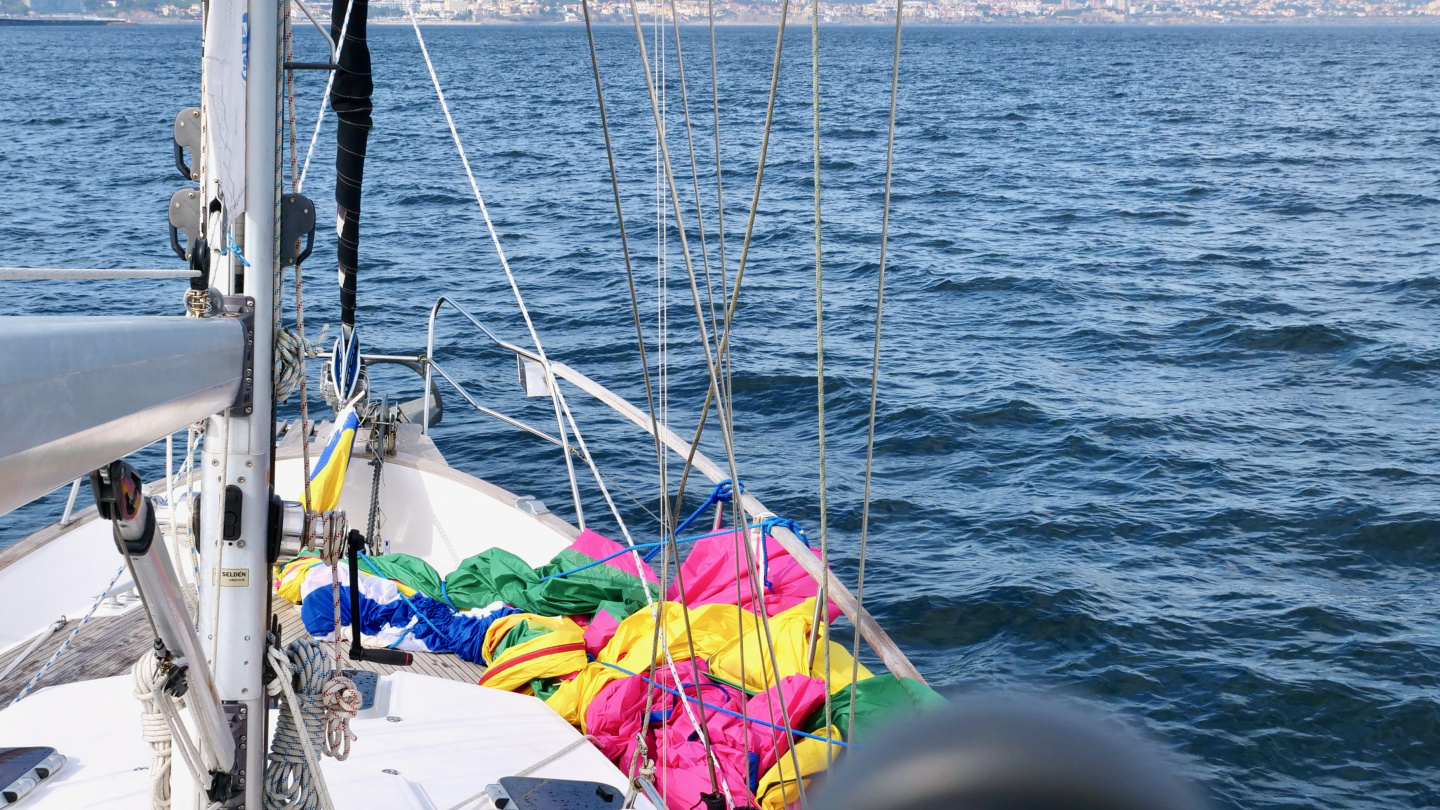Finally, the Portuguese tradewinds reached us. We were sailing for almost the whole 46 nautical miles from Peniche to Cascais and enjoying the smooth waters by hoisting the gennaker or so would you think…
It was an amazing weather for the culmination of the summer cruise. Like we have earlier mentioned so many times, the gennaker is our favorite sail and we have had a way too little possibilities to sail with it.
The gennaker went smoothly up. Packing the gennaker with its sock properly helps tremendously when hoisting it next time. Our sea day was relaxed, and we just enjoyed the sea and the Sun while Suwena quietly sliced forward through the water – what can be better. We could not really hope for better sailing for finishing our summer cruise.


Well, we got a whole lotta sailing as we approached the cape of Cabo da Roca, the westernmost point of continental Europe.

The wind was comfortable 15 knots the whole way and everything was perfect until we passed the cape of Cabo da Roca. The wind increased to 18 to 20 knots, and we made our summer’s speed record of 8.7 knots. We were enjoying the speed and started to think how much the wind might increase over 20 knots that we would still manage to get the gennaker and sock down? While we were pondering the wind had already increased to 23 knots and we suddenly got very busy trying to get the sail down before we will have two smaller sails instead of one big pulling us forward.
It was a hard effort to get the sock down but the joy was shortlived. When I was fastening the gennaker sock lines to the cleat, there was a sudden loud crack and the collar of the sock broke. The gennaker was again fully up within seconds and our speed kept increasing. In the aftermath we checked from Marinetraffic that Suwena’s speed through the water was 9.2 knots!
The situation was terrible because of the wind noise I could not hear Andrus from the aft deck when he tried to shout advice to me and vice versa he did not know that the collar went completely broken instead of the lines being slipped from my hands. I was in quite a distress and I did not loosen the halyard to just let the sail drop into the sea.
Andrus tried to help me by motoring downwind for releasing the pressure from the sail, but the wind kept increasing faster than our motoring speed forward and the sail kept pulling Suwena with ever-increasing speed forward. Also trying to break with engine was not a good idea at all as the boat turned sideways with sail heeling boat to the side a lot. Thus, we stopped the engine! When we finally started lowering the halyard then of course the sail was immediately next to the boat in water and we got busy trying to get it back on the deck as we were worried getting either the sail or the sheet tangled with the propeller.
We and the sail were totally soaked with salt water before our beautiful over 100 square meters large gennaker was sadly laying on the foredeck all wrinkled up. Well, still in the morning we had a very good idea that the gennaker will be well aired and dried during the whole day flying in the sunshine before packing it away waiting for the next summer.
Fortunately, we had a plenty of space during the whole incident, even until Africa a few hundred miles south. After the sail was finally properly secured to the railing so it will not make another flight because the wind was still increasing, we turned towards the anchorage of Cascais.
We put the hook down with our hands limp from fighting with the sail and enjoyed a stiff shot of Captain Morgan rom. Phew, what an ending to leisurely downwind sail.

Two very tired sailors spent a night in the anchorage in the bay of Cascais and next day we continued towards Suwena’s base in the marina of Parque das Nações in Lisbon.

